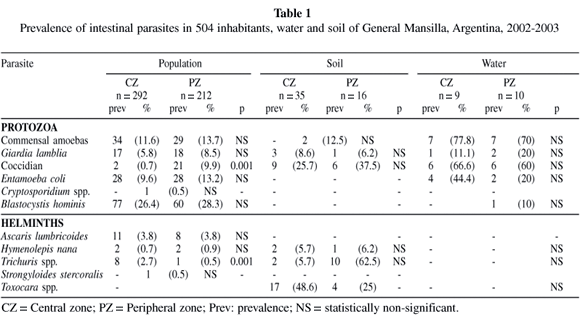We evaluate the prevalence of intestinal parasites in 504 people and the degree of association between environmental variables and parasites found in population, soil and water in a rural area of Argentina during 2002-2003. A structured survey was used to evaluate the environmental variables and fecal-human, soil and water samples were analyzed. The prevalence of parasites was 45.4%. Most prevalent protozoa were Blastocystis hominis (27.2%) and Giardia lamblia (6.9%), while the most prevalent helminth was Ascaris lumbricoides (3.8%). The analyzed environmental variables showing association (p < 0.05) with presence of parasites in population were: cardboard-tin or wooden house, dirt floor, home or communal water pump, faucet outside the house or public faucet and cesspool or latrine. Parasite forms were found in 82.3% of the soil samples and in 84.2% of the water samples. In both samples we found parasites that were also found in people. In this study we have found deficient sanitary conditions associated with presence of parasites in population and we have evidenced that contaminated soil and water were the source of these parasites.
Intestinal parasites; Rural population; Soil; Water; Argentina


